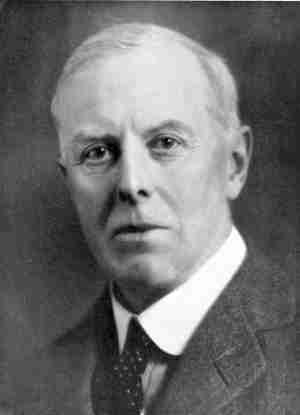John Sealy Townsend facts for kids
Quick facts for kids
John Townsend
|
|
|---|---|

John Sealy Edward Townsend (1868–1957)
|
|
| Born | 7 June 1868 Galway, County Galway, Ireland
|
| Died | 16 February 1957 (aged 88) Oxford, England
|
| Citizenship | United Kingdom |
| Alma mater | Trinity College, Dublin University of Cambridge |
| Known for | Townsend discharge Ramsauer–Townsend effect Townsend (unit) |
| Awards | Hughes Medal (1914) Knighthood (1941) |
| Scientific career | |
| Fields | Physicist |
| Institutions | University of Oxford |
| Academic advisors | J. J. Thomson |
| Doctoral students | Victor Albert Bailey Henry Brose Robert Van de Graaff |
| Signature | |
Sir John Sealy Edward Townsend (born June 7, 1868 – died February 16, 1957) was an important Irish-British scientist. He was a physicist who studied how electricity moves through gases. He also found a way to measure the tiny electric charge of a single electron. He taught physics at Oxford University.
He discovered something called the "electron avalanche." This is a process where electrons in a gas multiply very quickly. It is now known as the Townsend discharge.
Contents
Early Life and Education
John Townsend was born in Galway, County Galway, Ireland. His father, Edward Townsend, was a professor of engineering. In 1885, John started studying at Trinity College Dublin. He was very good at mathematics and earned his degree in 1890.
Later, he went to Trinity College, Cambridge. There, he became a research student at the famous Cavendish laboratory. He studied under a well-known scientist named J. J. Thomson.
Discoveries and Research
While at Cambridge, John Townsend developed his "collision theory." This theory helped explain how tiny particles like electrons move and interact. Around 1897, he did important work on how electricity moves through gases. This research led to the discovery of the Townsend discharge.
His work also helped determine the basic electric charge of an electron. He used a method involving tiny droplets. Another scientist, Robert Andrews Millikan, later improved this method.
Professor at Oxford
In 1900, John Townsend became a physics professor at Oxford University. In 1901, he found out that ions (atoms with an electric charge) could cause other molecules to become charged. He also studied how electrons move in gases.
His independent studies in the 1920s looked at how atoms and low-energy electrons collide. This work is now called the Ramsauer–Townsend effect. On June 11, 1903, he became a member of the Royal Society. This is a group of very important scientists. He also received the Hughes Medal in 1914 for his work.
Contributions During Wartime
During World War I, John Townsend helped with research at Woolwich. He worked on wireless communication methods for the Royal Naval Air Service. This helped with aircraft communication during the war.
Later Career and Retirement
Between the two World Wars, Townsend led a small but effective group of researchers at Oxford. Many of his students became important physicists. However, as he got older, his teaching style became less popular.
In 1941, John Townsend's time at Oxford came to an end. He had been knighted in January 1941, which meant he was given the title "Sir." He resigned from his position in September of that year.
John Townsend spent his retirement in Oxford. He passed away in 1957. He was married to Mary Georgiana Lambert, and they had two sons. His wife was also active in politics and became the Mayor of Oxford twice.
Works
- The Theory of Ionisation of Gases by Collision (1910)
- Motion of Electrons in Gases (1925)
- Electricity and Radio Transmission (1943)
- Electromagnetic Waves (1951)
See also
- Townsend Building of the Clarendon Laboratory in Oxford

